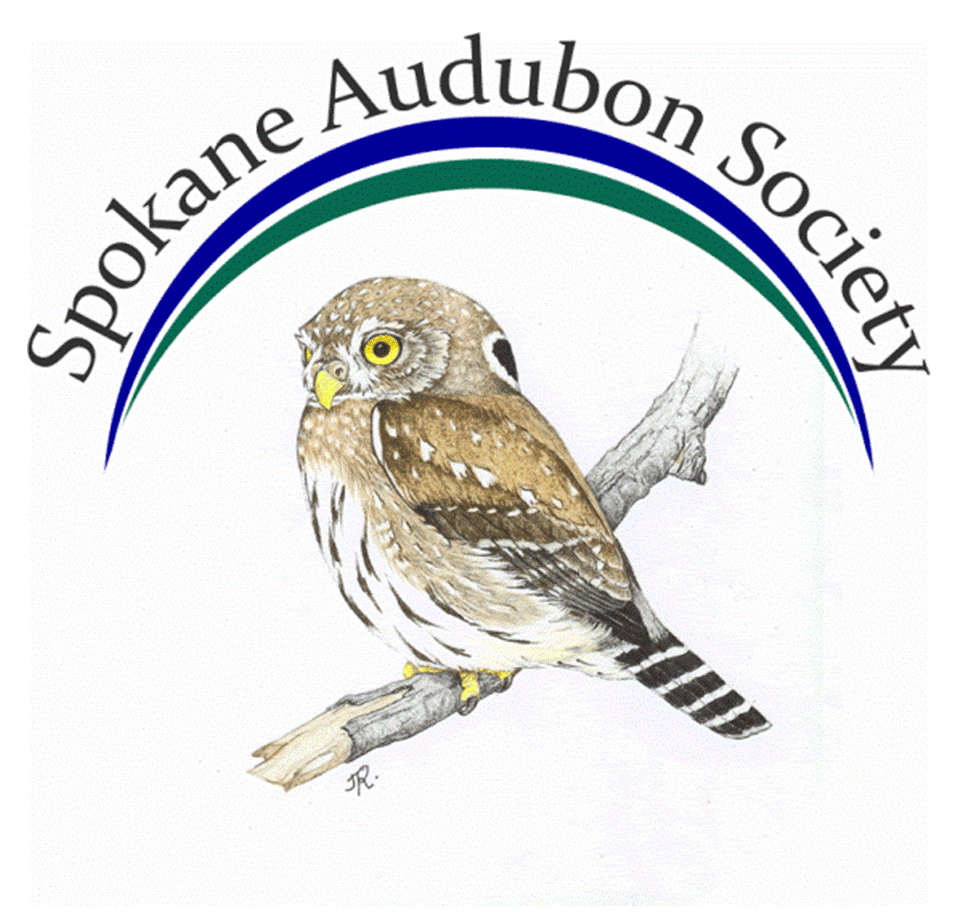Skagit County Field Trip
Leaders: Bea and Jim Harrison
Written By Bea and Jim Harrison
Dowitchers (Photo by Bea Harrison)
The last week of October, five brave souls embarked on a mission: to experience the phenomenon that is the Skagit delta during the Fall bird migration. Burdened with copious quantities of bird books, apps, scopes, cameras, binoculars and most importantly rain gear, we rose to the occasion.
Our first stop of the morning would have made the whole trip worthwhile. We arrived at daylight at Fir Island management area, (also known as Hayton Farms). The tide was very low, exposing acres of mud flats. Perfect conditions. The next hour was wonderful. Thousands of snow geese were roosting in the nearby bay. As the morning progressed, flight after flight came over us as they headed for inland ag fields. Bald eagles swooped through the geese, keeping them on the move, each flight starting with a cacophonous roar of geese calling, distracting us from the hundreds of dunlin and other shorebirds circling overhead and arriving to feed on the wetlands before the tide returned. We recorded 23 species before moving on.
Next, we visited Wiley Slough at the Skagit Wildlife Area, just a few miles away. This site has wetlands, a good riparian habitat and a nice walking trail along a levy. We saw a variety of birds from purple finches, a pileated woodpecker, a peregrine falcon to Wilson’s snipe.
We moved on to Lone Tree Point on Skagit Bay. We were looking for the black oystercatchers that hang out there, but the tide had come in and covered their normal shell flat. Luckily, 18 of them flew by as we were leaving. A raft of hundreds of double-crested cormorants was seen just offshore. We also picked up Eurasian wigeon there.
Next stop was Deception Pass State Park Cranberry Lake site. We parked and broke out the scopes. This is a good spot to get pelagics. We saw a variety of gulls including Heermann’s and short bill. Some highlights were Harlequin ducks, surf scoters and pigeon guillemots in their winter plumage. We missed seeing the marble murrelets, which are often seen there.
We moved on to Ship Harbor Preserve, close to the Anacortes ferry. This park is a well-kept secret. Purple martins nest there in the summer. American wigeons always seem to be feeding at a fresh-water runoff area, providing amazing views and photography opportunities. We got a great look at three Anna’s hummingbirds, golden-crowned sparrows eating apples in a tree and a variety of riparian and water birds. We watched a bald eagle attack a family of river otters. For that matter, during the trip we saw eagles attacking loons, ducks, geese and we saw one eagle catch and eat what looked like a coot. No shortage of bald eagles in that area. Speaking of eating, it was great to go out to dinner in a real restaurant again! Which we did each night.
The second day of our trip, we started at Fir and Wiley slough again. It was a beautiful morning, considering we had a 100% chance of rain predicted. The morning light over the slough was awe-inspiring, and everyone got some beautiful shots. Once again, snow geese were abundant and we picked up a few peeps.
At Wiley Slough, only Bea got to see the resident black phoebe, fleetingly, but everyone got to see some savanna sparrows, Northern shovelers, and some green-winged teal.
From there we drove around March Point south of Anacortes where we found white-winged scoters. Next, we checked the bay behind the Swinomish casino. The rain prediction proved true, as we drove to the beach at Padilla Bay State Park. We decided to persevere and drove to the overlook on Samish Island. This was another opportunity to break out the scopes as we tried to keep the optics dry enough to scan the bay. Alan found a Pacific loon and Bonaparte’s gull. Our last location for the day was the driving loop around Washington Park in Anacortes. We stopped to glass the straight and we were attacked by chestnut backed chickadees and sparrows. One chickadee landed on Jim’s hand! Obviously, someone had been feeding the birds at this spot. It was a good opportunity to get some close-up photos of chestnut-backs. We also got good looks at more harlequin ducks and a brown creeper caught our eye near the car.
Wearily, we headed back to town. Final total 79 species, but the best reward of the trip was the opportunity to witness one of mother nature’s special migration events in one of the most beautiful areas of the state.
We crammed a lot of nature viewing into two days. It was especially fun with great folks like Sharon, Alan and Marc.
We missed the swans this year, but there’s always next October……
Meanwhile, enjoy the pictures below, all taken by our trip participants.






















